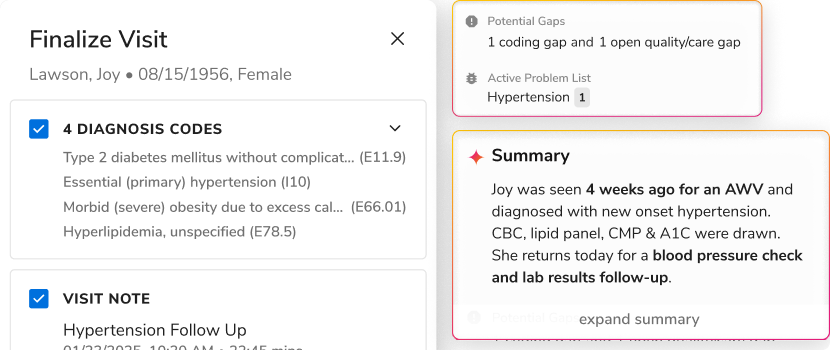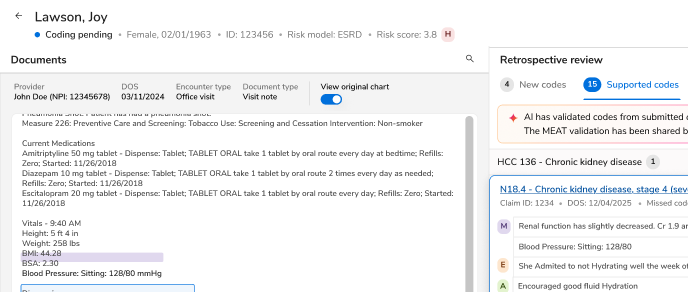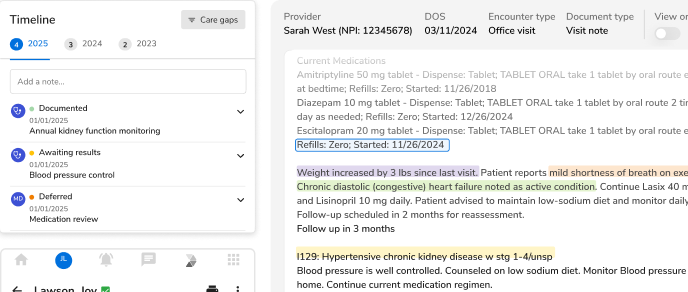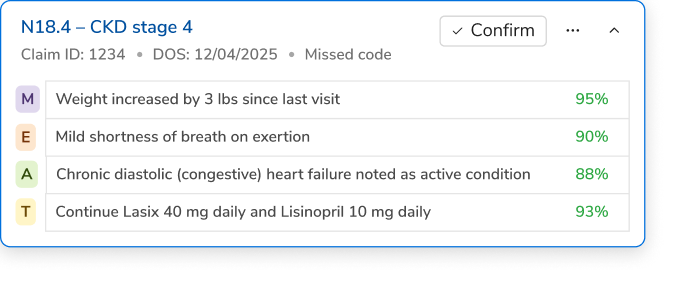Intelligent Scheduling: the Key to Minimizing Patient No-Shows

.png)
Healthcare providers face a persistent challenge impacting their bottom line and patient care quality: appointment no-shows. When patients fail to arrive for scheduled appointments without notice, it creates a cascade of inefficiencies throughout the healthcare system. Empty appointment slots represent lost revenue, wasted provider time, and missed opportunities to treat other patients who need care.
Intelligent appointment scheduling systems offer a powerful solution to this pervasive problem. These systems significantly reduce no-show rates by leveraging technology, data analytics, and patient-centered design while improving the overall patient experience. The benefits extend beyond just filling appointment slots; they create more efficient practices, improve care continuity, and ultimately lead to better health outcomes.
Understanding the no-show problem
Before exploring solutions, it's essential to understand why patients miss appointments in the first place. The most common reasons include:
- Simply forgetting about the appointment
- Schedule conflicts with work or family responsibilities
- Feeling better and believing the appointment is no longer necessary
- Fear or anxiety about a potential diagnosis or treatment
- Financial concerns about payment or insurance coverage
For healthcare organizations, these missed appointments translate into a substantial financial impact. Beyond the immediate revenue loss from the unused appointment slot, there are cascading costs: staff time wasted, scheduling inefficiencies, and the administrative burden of following up and rescheduling.
Key elements of intelligent appointment scheduling
Modern appointment scheduling systems go far beyond simple calendar functionality. The most effective solutions incorporate several key elements:
Digital-first patient engagement
Today's patients expect the same convenience from healthcare that they experience in other aspects of their lives. Digital-first engagement meets patients where they already are: on their smartphones and computers. This approach makes scheduling, rescheduling, and appointment management seamless in patients' digital lives rather than separate administrative burdens.
Personalized scheduling experiences
Not all patients have same scheduling needs or preferences. Intelligent systems recognize this diversity and tailor the scheduling experience accordingly. For instance, elderly patients might prefer morning appointments and phone reminders, while working professionals might need evening slots and text notifications. These personalized touches make patients feel understood and valued.
Multi-channel access options
Effective scheduling systems provide multiple ways for patients to book and manage appointments. While some patients prefer the convenience of online self-scheduling, others still value phone conversations with staff. By offering options including web portals, mobile apps, phone systems, and in-person scheduling, practices ensure all patients can access care through their preferred channels.
Leveraging technology to enhance the scheduling experience
The technological foundation of intelligent scheduling systems creates opportunities for significant improvements in the patient experience while reducing administrative burden.
AI-powered scheduling assistants
AI transforms appointment scheduling from a static process to a dynamic, learning system. AI-powered assistants can analyze patterns in patient behavior to identify optimal appointment times, predict potential no-shows, and proactively suggest interventions. These systems become more effective over time as they gather data and refine their algorithms.
For example, if a patient consistently attends Tuesday morning appointments but frequently misses Friday afternoon slots, the system can prioritize offering Tuesday options. For patients with a history of no-shows, the system might trigger enhanced reminder protocols or suggest telehealth alternatives.
Integrated platforms connecting EHR and marketing tools
The most powerful scheduling systems don't exist in isolation- they connect with electronic health records (EHR) and patient communication tools to create an ideal experience. This integration ensures that it considers clinical factors while enabling personalized outreach.
With integrated platforms, appointment reminders can include specific preparation instructions based on the appointment type. Follow-up appointments can be automatically recommended based on clinical guidelines. Marketing communications can include one-click scheduling options for preventive care services that are due.
Mobile optimization strategies
With most patients now managing their lives through smartphones, mobile optimization isn't optional- it's essential. Mobile-friendly scheduling experiences allow patients to book or reschedule appointments in moments of availability, whether waiting in line at the grocery store or during a lunch break.
Effective mobile strategies include responsive design, minimal data entry requirements, streamlined authentication, and intuitive interfaces that work well on smaller screens. The goal is to make scheduling an appointment as simple as ordering takeout or booking a rideshare.
Proactive patient outreach
This is where solutions like Outreach demonstrate particular value. Rather than passively waiting for patients to remember appointments, proactive systems reach out with timely, relevant information through patients' preferred channels.
Outreach delivers personalized communications before and after visits to ensure patients are prepared and engaged. Before appointments, patients receive reminders with specific preparation instructions, parking information, and easy options to confirm, reschedule, or ask questions. After visits, follow-up messages reinforce care plans and appointment adherence.
By proactively communicating appointment information to patients, Outreach significantly reduces the likelihood that patients will forget or deprioritize their healthcare appointments. This consistent engagement connects patients and their care teams, enhancing appointment adherence.
Measuring success and roi
Implementing smart scheduling systems represents an investment, and healthcare organizations measure the return on that investment systematically.
Establishing baseline metrics
Before implementing any new system, it's crucial to document current performance metrics, including:
- No-show rates by provider, appointment type, and time slot
- Financial impact of no-shows on the practice
- Staff time allocated to scheduling and reminder activities
- Patient satisfaction scores related to appointment processes
These baseline measurements provide the foundation for evaluating the effectiveness of new scheduling solutions and quantifying their impact.
Key performance indicators to track
Once a smart scheduling system is in place, ongoing monitoring of key metrics helps optimize performance and demonstrate value. Important KPIs include:
- No-show rate reduction (overall and by patient segment)
- Patient-initiated reschedules (which are preferable to no-shows)
- Digital adoption rates among different patient populations
- Time from appointment request to scheduled visit
- Staff time redirected from scheduling to higher-value activities
Regular reporting on these metrics helps identify opportunities for further improvement and builds organizational support for continued investment in patient engagement technology.
Calculating the financial impact of reduced no-shows
The financial return from reduced no-shows can be calculated using a straightforward formula:
(Reduction in no-shows / 100) x Total scheduled appointments x Average revenue per appointment
For practices implementing comprehensive intelligent scheduling systems, the reduction in no-shows typically ranges from 15% to 30%, representing a significant financial opportunity. Beyond direct revenue recovery, practices benefit from improved operational efficiency, better resource utilization, and enhanced patient satisfaction.
Ready to reduce no-shows and recapture lost revenue? Schedule a personalized demo today to see how we can transform patient appointment adherence at your practice.

.png)





.png)









.svg)
.svg)

.svg)

